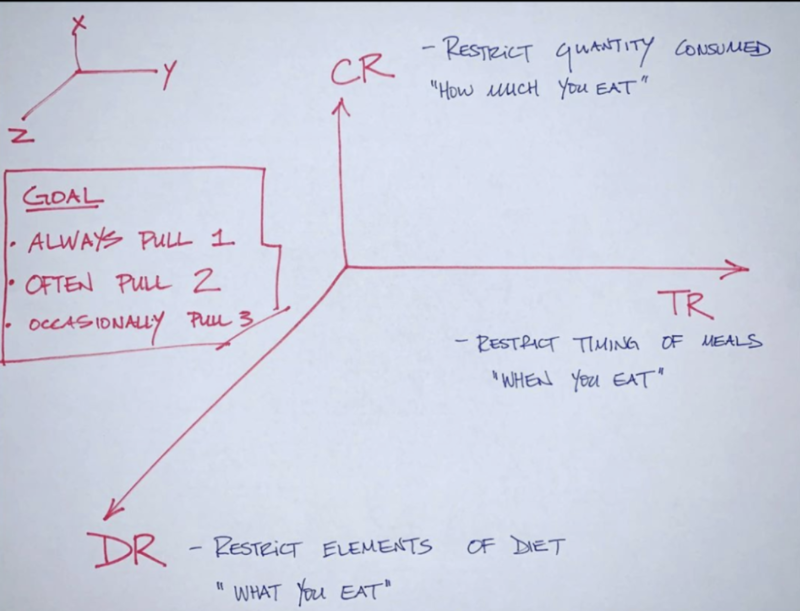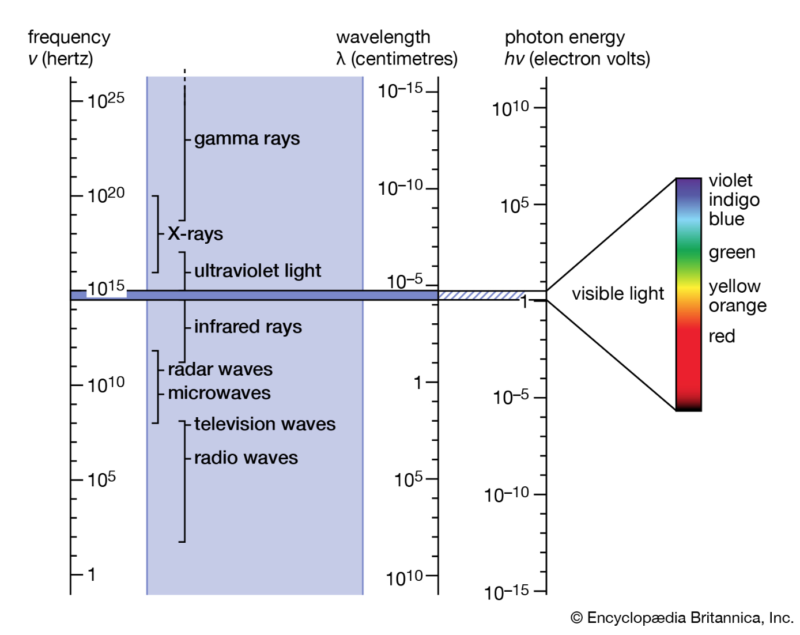Is There A Best Time For Red Light Therapy?
My good friend Dr. Peter Attia developed an interesting way to think about how we can modify our food intake to set ourselves up for success:
1. Limit the types of food we eat.
This is one reason paleo, keto, and carnivore diets tend to give people great results. By removing certain food groups, you are naturally decreasing hyperpalatibity and therefore making it easier to control how much food you eat. If you want to learn more about hyperpalatabilty of food, I talk about it extensively in my second book Wired To Eat or you can listen to this episode of The Paleo Solution Podcast
2. Limit the amount of food we eat.
This is perhaps the most instinctive thing to do with regards to food (just eat less), and is certainly the main advice we get from medical circles (with the results honestly being pretty poor all things considered…most people find “just eat less” to be a tough thing to do).
3. Limit the time period we have access to food.
Although fasting has been a medical and health related topic for at least 2,000 years, this is arguably the new kid on the block with regards to how we might modify how we eat. This recent review paper details the therapeutic potential of intermittent fasting (IF).
It’s a fascinating topic, but nested within the IF topic is the concept that the timing of when we eat may be remarkably important.
All things being equal, eating the bulk of our calories early in the day confers a greater metabolic benefit than eating them later in the day. Meaning that eating breakfast at 7 or 8am and wrapping up dinner at say 2-4PM may have dramatically better metabolic effects than skipping breakfast and eating between say noon and 8pm.
This is interesting and kind of a bummer as skipping breakfast tends to be easier in practice and socially than skipping dinner, or having it when most other folks are still digesting lunch.

Meal timing has gained attention with the growing understanding of the importance of circadian biology…the natural wake/sleep cycles that appear to govern all life on earth.
While food and physical activity are significant players in circadian biology, arguably the most important feature is light. With regards to the amount, type, and timing of our photo exposure, you can think about light like we think about food.
What we perceive to be light is a narrow slice of the electromagnetic spectrum that mainly comes from the sun.

You might recall from a science class that we can remember the colors of visible light with the acronym ROYGBIV (red, orange, yellow, green, blue, indigo, violet). If we inch just a bit outside the visible spectrum past red we are in the “infrared” portion of the spectrum, while just a bit past violet is the “ultraviolet” section which includes UVA and UVB radiation. And yes, as a quick side note, this is ALL radiation, so careful with how we think about this stuff.
There has been an enormous increase in our knowledge about the importance of light exposure, both in terms of type, amount, and, more recently, timing. For at least 40 years we have been told to avoid sunlight lest we succumb to skin cancer. Although well intentioned, this advice has caused more harm than good. Not only is safe, reasonable UV exposure a net win with regards to health, the timing may be critically important.
Early daily exposure to UV appears to be quite different than exposure later in the day. The exact mechanisms at play here are not well understood but it appears the body is primed, almost expecting UV exposure earlier in the day. One does not need to go all cave-man to understand how this might be a feature baked into our biological cake.
This is interesting and important stuff for a lot of health and performance related reasons. But what might we learn from this with regards to the best time to take far infrared light? Infrared light has an ever-growing mountain of research supporting its efficacy in everything from increasing nitric oxide signaling to reducing inflammation.

Not surprisingly, the optimum timing for red light therapy may be at the opposite end of the clock from when we might best take in both full spectrum light and UV: the evening.
This makes sense if we think about when early humans would have experienced the largest dose of far infrared energy. It would be via the setting sun in the evening, and this is further augmented by campfires and the background infrared radiation from the slowly cooling environment we experience in an outdoor setting.
Although this makes good sense within the context of what we know about circadian biology at large, do we have anything more concrete than musings about how our paleo ancestors might have lived? Fortunately, yes, we do.
In a 2012 study of elite female basketball players, evening red light therapy dramatically improved melatonin production, sleep quality, and recovery. This is not to say that earlier daily exposure to red light therapy will provide no benefits, but if you have the option to use this modality in the late afternoon or early evening, you may get a disproportionate benefit, not dissimilar to folks who opt for early time restricted feeding.
Wondering how you can get your evening red light therapy? There are several in-home devices that make it easy to incorporate infrared light into your daily routine. My favorite is Joovv—a leading manufacturer of in-home red light therapy devices. Click here to learn more about Joovv (and if you use my code at purchase you can pick a free gift!)
from The Paleo Diet https://ift.tt/3bfv096
Comments
Post a Comment